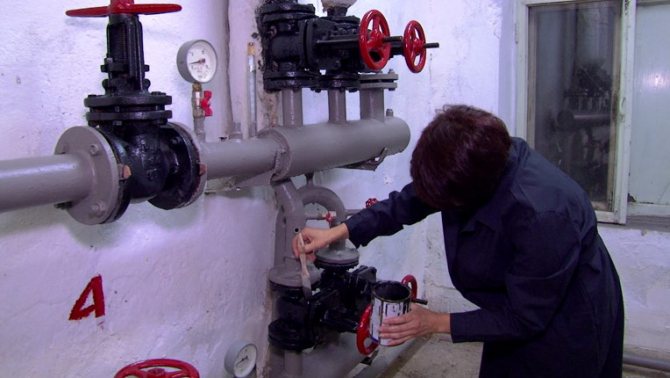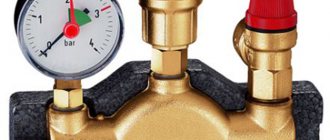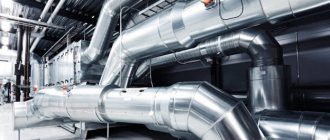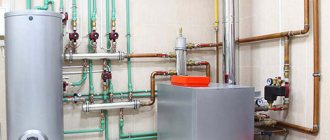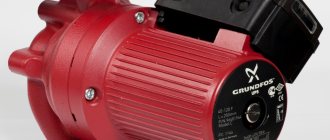Normal pressure in a closed heating system is very important. Firstly, this is a warm room in winter, and secondly, the normal operation of all components of the boiler. But the arrow is not always in the range we need, and there may be a lot of reasons for this. High and low pressure in the heating system leads to blocking of the pump and the absence of warm batteries. Let's take a closer look at how many atmospheres our pipes should have and how to fix common problems.

Some general information
Even at the design stage of the heating system, manometers are installed in different places. This is necessary in order to control the pressure. When the device detects a deviation from the norm, it is necessary to take any action, a little later we will talk about what to do in a particular situation. If you do not take any measures, then the heating efficiency decreases, and the service life of the same boiler is reduced. Many people know that the most detrimental effect on closed systems is water hammer, for which expansion tanks are provided for damping. So, before each heating season, it is advisable to check the system for weak points. This is done quite simply. You need to create excess pressure and see where it manifests itself.
Autonomous heating system equipment in a multi-storey building


Today, the installation of an autonomous heating system in multi-storey and private houses is increasingly popularized. Although the price of the equipment is quite high, as well as the legalization of such a building, the feasibility of the installation does not decrease from this, since the costs are recouped in a relatively short time.
The main feature of autonomous heating is the payment for the energy resources used only upon consumption, that is, there is no need to pay for heating the apartment in the summer. Also, if the cold weather comes suddenly, and the centralized heating is not going to be turned on yet, then the autonomous system can be used at any timewhen the owners of the apartment need it.
But on the other hand, one must also remember that it is necessary for the apartment owners to regulate the temperature and pressure of the coolant independently. In central heating, this is done in the boiler room by specialists. Therefore, for self-adjustment, you need to at least study the basic rules and norms of the characteristics of the coolant.
The first start-up and adjustment of the water pressure should be carried out by a specialist with an appropriate permit for gas, electric or solid fuel equipment. It is, as a rule, installed in a room near the kitchen or directly in the corner of the kitchen, since it is to it that all the necessary communications for its operation are connected - gas and water. But still, a separate room for the boiler room would be an ideal option for installation.
The reason for the instability of the water pressure in the autonomous heating system can be:
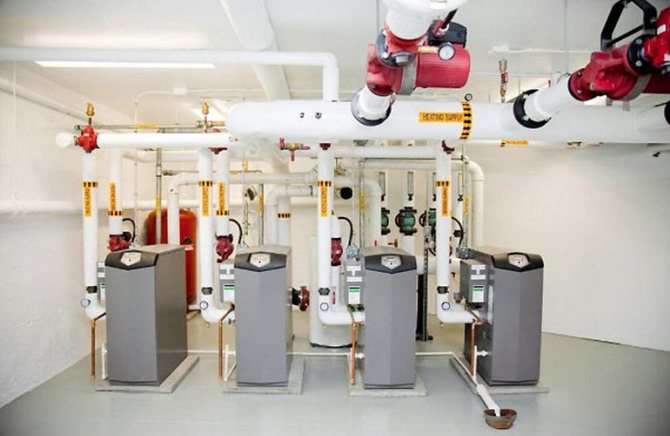

- Coolant leak. The place of such a breakdown is often various connections on radiators, air vents. In this regard, if a similar situation arises (when the pressure gauge showed a decrease in the water pressure), it is necessary to carefully check all the connecting nodes and especially the air vents. To repair the damaged area, it is very often required to completely drain the coolant, carry out repair work and only then refill the water.
- Damaged expansion tank diaphragm.Often this happens due to incorrect calculations of the capacity of the device relative to the heating system initially, even at the time of the heating arrangement. It can stretch, tear, or crack. Therefore, when choosing an expansion tank, you should install a device that actually meets the parameters of the system. It is clear that each owner saves space in the apartment, but neglect of such rules often leads to the failure of all equipment.
- Regardless of the pressure in the heating system of a multi-storey building, in an autonomous circuit it will be several times less, but it will not insure against the occurrence of air jams. They can appear in the first few days after pouring a new coolant. To quickly remove air from the system, it is recommended to install a Mayevsky valve on each radiator. It is designed to perform such functions.
- The water pressure may decrease due to a breakdown of the heat exchanger-boiler. Here you won't be able to fix the system yourself, but you will have to call a specialist.
- Boiling water at very high boiler output settings. Thus, the amount of coolant will decrease, the pressure level will also decrease.
How to fix the situation with a drop?
Everything is extremely simple here. First, you need to take a look at the pressure gauge, which has several characteristic zones. If the arrow is in green, then everything is fine, and if it is noticed that the pressure in the heating system is dropping, then the indicator will be in the white zone. There is also a red one, it signals an increase. In most cases, you can handle it on your own. First, you need to find two valves. One of them serves for injection, the second - for bleeding the carrier from the system. Then everything is simple and clear. If there is a lack of media in the system, it is necessary to open the discharge valve and observe the pressure gauge installed on the boiler. When the arrow reaches the required value, close the valve. If bleeding is needed, everything is done in the same way, with the only difference being that you need to take a vessel with you, where the water from the system will drain. When the arrow of the pressure gauge shows the rate, turn on the valve. Often this is how the pressure drop in the heating system is "treated". For now, let's move on.
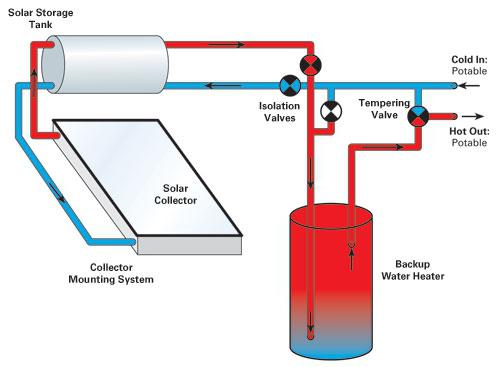

Differential pressure and its regulation
The jumps in the pressure of the coolant in the system are most often indicated with an increase:
- strong overheating of water;
- the cross section of the pipes does not correspond to the norm (less than required);
- clogging of pipes and deposits in heating appliances;
- the presence of air congestion;
- pump performance is higher than required;
- some of its nodes are blocked in the system.
When decreasing:
- violation of the integrity of the system and leakage of the coolant;
- breakdown or malfunction of the pump;
- may be caused by a malfunction of the safety unit or a ruptured diaphragm in the expansion tank;
- outflow of the coolant from the heating to the carrier circuit;
- clogging of filters and pipes of the system.
The pressure drop in the heating system of an apartment building has a bad effect on the performance of its individual units, disabling them. To avoid such problems, useful devices such as a circulation pump and pressure regulators should be used.
What should be the operating pressure in the heating system?
But to answer this question in a nutshell is quite simple. Much depends on which house you live in. For example, for autonomous heating of a private house or apartment, 0.7-1.5 atm is often considered normal. But again, these are approximate figures, since one boiler is designed to operate in a wider range, for example, 0.5-2.0 atm, and the other in a smaller one. This must be seen in the passport of your boiler. If there is none, stick to the golden mean - 1.5 Atm. The situation is quite different in those houses that are connected to central heating.In this case, it is necessary to be guided by the number of storeys. In 9-storey buildings, the ideal pressure is 5-7 atm, and in high-rise buildings - 7-10 atm. As for the pressure under which the carrier is supplied to the buildings, it is most often 12 atm. You can lower the pressure using pressure regulators, and increase it by installing a circulation pump. The latter option is extremely relevant for the upper floors of high-rise buildings.
Normal conditions for the heating system
To understand what pressure in heating should be normal, you need to pay attention to the number of storeys in the house. So, in one-story buildings, these indicators are in the range of 1.5-2 kg / cm². In order to heat a two-story house well, the pressure must be maintained within the range of 2-4 kg / cm².
In houses with nine or ten floors, the pressure is adjusted to 5-7 kg / cm². In high-rise buildings, it is practically equal to the indicators of the heating main and reaches 7-10 kg / cm². On urban heating mains, the pressure is usually supplied with a certain margin and is equal to 12 kg / cm².
In this video, you will learn how to fill the heating system:
On the lower floors maintain the working pressure with special regulators in the heating system. What it will be here is very important, since the heating of the whole house depends on it. The coolant is supplied to higher floors using special pumps.
Usually, after the end of each heating season, the heating network enterprise carries out a pressure test of all heating structures in order to identify areas that have become unusable.
As for the heating of a private house, here the owner bears full responsibility for the serviceability of the equipment that can maintain the required pressure of the coolant in the system. In this case, it is necessary to know what pressure should be in the heating boiler. As a rule, it is designed for maximum readings of a manometer up to 3 kg / cm².
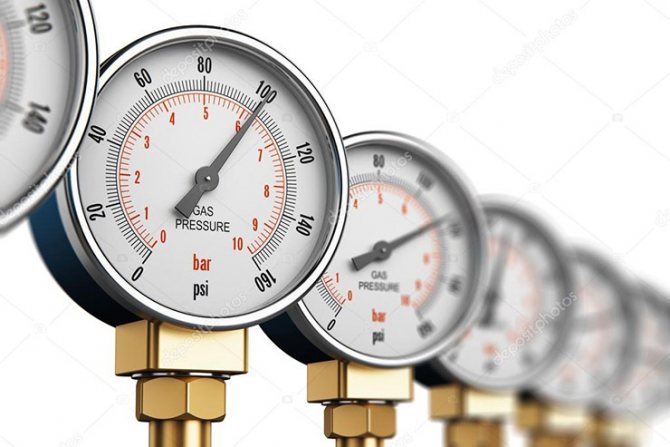

It is important to know what the pressure should be in the boiler itself.
How does media temperature affect pressure?
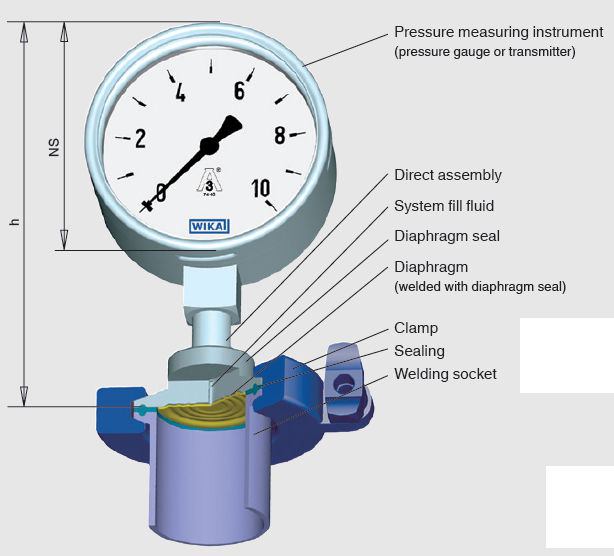

After the closed water supply system is installed, a certain amount of coolant is pumped in. As a rule, the pressure in the system should be minimal. This is because the water is still cold. When the carrier heats up, it will expand and, as a result, the pressure inside the system will slightly increase. In principle, it is perfectly reasonable to regulate the amount of atmospheres by adjusting the temperature of the water. Currently, expansion tanks are used, they are also hydraulic accumulators, which accumulate energy inside themselves and do not allow an increase in pressure. The principle of the system is extremely simple. When the operating pressure in the heating system reaches 2 atm, the expansion tank is turned on. The accumulator takes away the excess coolant, thereby maintaining the pressure at the required level. But it so happens that the expansion tank is full, there is nowhere for excess water to go, in this case, a critical excess pressure (more than 3 atm.) May arise in the system. To save the system from destruction, a safety valve is activated to remove excess water.
Types and their meanings
As indicated in the regulations and acts on the operation of heating systems, a guaranteed stable pressure in the pipeline allows them to work as efficiently as possible, providing all apartments with heat, while avoiding unnecessary heat loss.
The working pressure in the heating system of an apartment building combines 3 types:
- Static the pressure in the heating of apartment buildings shows how strongly or weakly the coolant presses on the pipes and radiators from the inside. It depends on how high the equipment is.
- Dynamic called the head with which water moves through the system.
- Maximum the pressure in the heating system of an apartment building (it is also called "permissible") indicates what pressure is considered a safe mode for the structure.
There are building codes (SNiP), which determine whether the pressure in the system is acceptable or exceeds it. If it does not correspond to the accepted indications, then this may affect the quality of her work.
Since almost all multi-storey buildings use closed-type heating systems, there are not so many indicators.
The pressure rate in the heating system of an apartment building of any type (Soviet Khrushchev, modern high-rise buildings) is equal to:
- for buildings up to 5 floors - 3-5 atmospheres;
- in nine-storey buildings it is 5-7 atm;
- in high-rise buildings from 10 floors - 7-10 atm;
For a heating main, which runs from the boiler room to heat consumption systems, the normal pressure is 12 atm.
To equalize the pressure and ensure stable operation of the entire mechanism, a pressure regulator is used in the heating system of an apartment building. This balancing manual valve regulates the amount of heating medium by simply turning the knob, each of which corresponds to a specific water flow rate. These data are indicated in the instructions supplied with the regulator.
Static and dynamic pressure
If we explain in simple words the role of static pressure in a closed heating system, then it can be expressed something like this: this is the force with which the liquid presses on the radiator and the pipeline, depending on the height. So, for every 10 meters there is +1 atm. But this only applies to natural circulation. There is also dynamic pressure, which is characterized by the pressure on the pipeline and radiators while driving. It is worth noting that when installing a closed heating system with a circulation pump, static and dynamic pressure is added, while taking into account the features of the equipment. So, a cast iron battery is designed to operate at 0.6 MPa.
What should be the standards of GOST and SNiP for apartment buildings
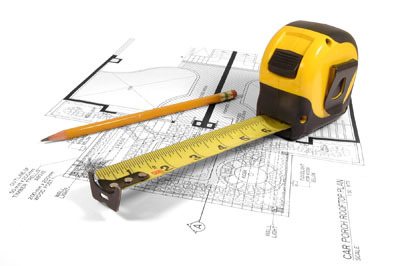

The documents stipulate the ranges for heating the building. Indicators calculated to maintain a temperature of about 20 ° C with a humidity of about 40%.
To achieve them, a project is being developed at the stage of preparation for construction. There are three values of working pressure:
- 2-4 atm for houses up to 5 floors;
- 5-7 for 6-9;
- 12 and above for 10-storey and large buildings.
Factors determining indications
Modern houses are equipped elevatorsthat divide the network into parts. Their purpose is to mix streams of water of different temperatures. They are equipped with regulators to control the nozzles. This affects the determination of pressure: a partially closed assembly changes the indicator.
Achieve the values specified in GOST, also the following factors interfere:
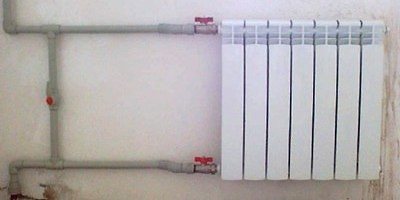

- Instrument powerinstalled in a building rarely matches the calculations carried out before the start of work.
- Equipment condition. It wears out during operation.
- Pipeline diameter. Sometimes, during repairs, the piping section is replaced by choosing a different size, which leads to a drop in pressure.
- Location of the apartment: the farther from the mains and the boiler, the greater the chance of a decrease in readings.
Checking the norm in multi-storey buildings
Carried out by pressure gauges at three points:
- in the feed, near the boiler, as well as on the return line at a similar point;
- near all used equipment: pumps, filters, regulators and others;
- on the highway near the boiler room and at the branch to the house.
The requirements for the indicators are determined by GOST and SNiP.
Diameter of pipes, as well as the degree of their wear
It must be remembered that the size of the pipe must also be taken into account. Often, residents set the diameter they need, which is almost always slightly larger than the standard sizes.This leads to the fact that the pressure in the system decreases slightly, which is due to the large amount of coolant that will fit into the system. Do not forget that in corner rooms the pressure in the pipes is always less, since this is the most distant point of the pipeline. The degree of wear of pipes and radiators also affects the pressure in the heating system of the house. As practice shows, the older the battery, the worse. Of course, not everyone can change them every 5-10 years, and it is inappropriate to do this, but from time to time it will not hurt to carry out prevention. If you are moving to a new place of residence and you know that the heating system there is old, then it is better to change it right away, so you will avoid many troubles.
What the pressure gauge shows
So what is the normal pressure in the heating system of a multi-storey building?
And what is going on along with this in the heating main?
- In summer, outside the heating season, the static pressure of the heating system corresponds to the height of the water column. For a ten-story building, it is approximately equal to 3 kgf / cm2, for a five-story building - 1.5 kgf / cm2.
- When the housekeeping is open for regular operation and the valves of the elevator unit, the pressure in the heating systems is actually equalized along the return pipeline and is normally equal to 3-4 kgf / cm2.


Allow, but since excess pressure in the heating pipes is needed for circulation in them. How so: the contour is aligned with the return flow, but still circulates?
Everything is very easy: at the end of the elevator, the pressure gauge will show only 2 meters (0.2 atmospheres) more than on the return pipeline. Yes - yes, a drop of only 2 meters causes a whole coolant to move in a huge house with hundreds of radiators.
What about the retaining washers? What difference is created on them?
Even less - from half a meter to a meter. And it is enough: because, due to a more complex configuration, the pressure loss in the heating system is much greater than in the hot water risers.
As for the motorway, for it during the heating season, the norm is approximately 8 atmospheres on the supply and 3 on the return. But the hydraulic resistance of the pipes and the houses connected to the highway closer to the CHP plant extinguish the drop, and the coolant can reach remote areas with parameters 6 / 3.5 and 5/4 kgf / cm2.
Finally, the main question: what is the pressure in the heating system for? Since with a full system, the coolant will circulate in any case, right?
Not this way.
Without excess pressure, the water column cannot rise above those 10 meters. In an apartment building above 3 floors, the heating simply will not work.
In addition, there are a couple more subtleties.
- Certainly, the contour will need to be reset and filled. It is problematic to do this without excess pressure.
- It is also necessary to remember about hot water supply. It is powered by the same heating mains. Without pressure, warm water will not get to the mixer.
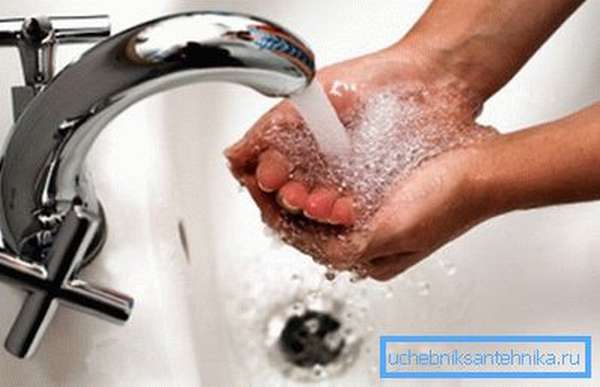

About Leak Testing
It is imperative to check the system for leaks. This is done to ensure that the heating is efficient and does not fail. In multi-storey buildings with central heating, the cold water test is most often used. In this case, if the water pressure in the heating system drops by more than 0.06 MPa in 30 minutes or 0.02 MPa is lost in 120 minutes, it is necessary to look for places of gusts. If the indicators do not go beyond the norm, then you can start the system and start the heating season. The hot water test is carried out just before the heating season. In this case, the carrier is supplied under pressure, which is the maximum for the equipment.
DHW
What pressure should be in the heating system - we sorted it out.
And what will the pressure gauge in the DHW system demonstrate?
- When cold water is heated by a boiler or a flow heater, the pressure of warm water will be exactly equal to the pressure in the cold water supply line minus the losses to overcome the hydraulic resistance of the pipes.
- When the hot water supply is supplied from the return pipe of the elevator, in front of the mixer there will be the same 3-4 atmospheres as on the return.
- But when connecting the hot water supply from the supply, the pressure in the mixer hoses can be about an impressive 6-7 kgf / cm2.
Practical consequence: when installing a kitchen mixer with your own hands, it is better not to be lazy and install several valves in front of the hoses.Their price starts from one and a half hundred rubles apiece. This simple instruction will give you the opportunity to quickly shut off the water in case of a burst of hoses and not suffer from its complete absence in the entire apartment during the repair.


